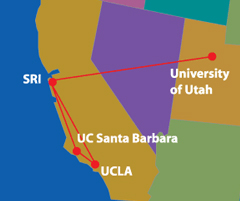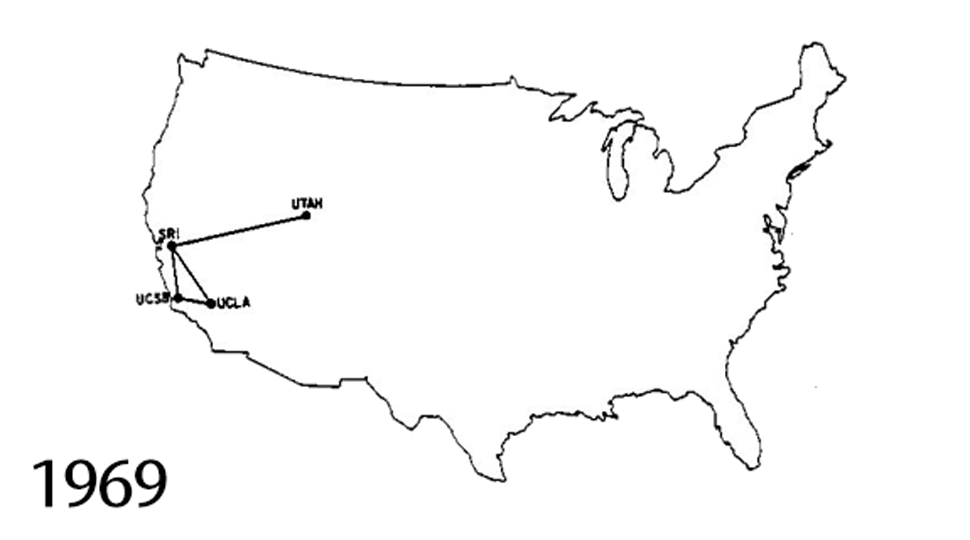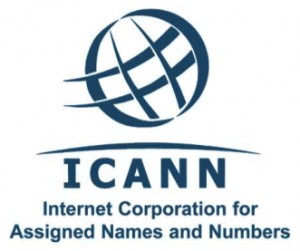On October 29th, 1969, while the nation was reading about news of another financial downturn at the stock market, something happened in California that would change the world forever.

The Original ARPAnet
At 10:30 pm, a signal was transmitted for the first time between two computers. The Advanced Research Projects Agency Network (ARPANET) transmitted the word “login” from a computer in UCLA to a computer in the Stanford Research Institute, some 354 miles away.
The system crashed after getting through the first two letters, transmitting “lo”. After an hour, the system was repaired and transmitted the full “login” without failure.
While ARPANET grew out of the Defense Department's Advanced Research Projects Agency (ARPA) its intended use was not, as is commonly misconceived, military. As Charles Herzfeld, ARPA Director (1965–1967), said:
"The ARPANET was not started to create a Command and Control System that would survive a nuclear attack, as many now claim. To build such a system was, clearly, a major military need, but it was not ARPA's mission to do this; in fact, we would have been severely criticized had we tried. Rather, the ARPANET came out of our frustration that there were only a limited number of large, powerful research computers in the country, and that many research investigators, who should have access to them, were geographically separated from them."
So the purpose of the first internet was not military, but scientific in nature.

In 1972 Ray Tomlinson invented the name-of-user@name-of-computer pattern for directing emails. Within 2 years hundreds of military users were using emails, giving the ARPANET unexpected significance.
By 1977 48,000 Personal Computers have been sold, and Operating Systems began to emerge.
By the mid 70’s, alongside ARPANET there was the National Physical Laboratory (NPL) network in the UK, a Merit Network between three universities in Michigan, the CYCLADES network in France, and UUCP and Usenet networks.

ARPANet between 1969-1989
These networks still did not interact with each other, which led to the creation of TCP/IP – a Transmission Control Program based on IP addresses. The TCP/IP hid differences between network protocols with the use of a common internetwork protocol, as well as making the host of the files, not the network, responsible for reliability. This dramatic change linked many of the world’s networks together.

By 1983 the network was overburdened by the fact that all different computers linked to the network were all identified in one HOSTS.TXT file, which had to be constantly updated. The solution came with the invention of the Domain Name System, which we use to this day. It is what links a Domain Name, such as www.google.com, to an IP number of a server with files that constitute the website.

The Nationa Science Foundation
By 1986 the NSFNET Project also provided support for the creation of regional research and education networks in the United States and for the connection of university and college campus networks to the regional networks of ARPANET. This exhibited the shift from a strict military use to an educational and development stage. As the two merged, the term internet was coined as a shortened version of internetworking, and used to describe the whole system.
By 1990, ARPANET had been overtaken and replaced by newer networking technologies and the project came to a close. New network service providers including PSINet, Alternet, CERFNet, ANS CO+RE, and many others were offering network access to commercial customers. NSFNET was no longer the de facto backbone and exchange point for Internet.

The CERN logo
In 1989 the European Research Organization CERN (known more recently for having discovered the Higgs Boson in the Large Hadron Collider) proposed a more effective internal communication system, but employee Tim Berners-Lee realized that by working it into TCP/IP, the system could be used world-wide. By 1990 the first website was finished, and by 1991 the World Wide Web was born.
The stage was set for the commercial sector to truly start taking advantage of this new technology. In 1992, the U.S. Congress passed the Scientific and Advanced-Technology Act, 42 U.S.C. § 1862(g), which allowed NSF to support access by the research and education communities to computer networks which were not used exclusively for research and education purposes. This permitted NSFNET to interconnect with commercial networks, opening a new era of computing.

The Original Windows Logo
By 1985 Microsoft released Microsoft Windows, which used its original MS-DOS system as a backbone. In the 90’s Windows and Mac OS X came to dominate the market, providing end-users access to the internet through web browsers, the first of which was called Erwise,. After that came Nescape, Internet Explorer, and Opera.

Clifford Stoll
Even in the mid-90’s the world had serious doubts about the usability and importance of the internet. In a February edition of Newsweek, Clifford Stoll denounced the internet as a gimmick and a waste of time.
“Do our computer pundits lack all common sense? The truth is no online database will replace your daily newspaper, no CD-ROM can take the place of a competent teacher and no computer network will change the way government works.”
Stoll laments that the internet is a barren wasteland of information, uncategorized, unsearchable, and useless.
“What the Internet hucksters won't tell you is tht the Internet is one big ocean of unedited data, without any pretense of completeness. Lacking editors, reviewers or critics, the Internet has become a wasteland of unfiltered data.”
He even doubts the commercial viability of e-commerece:
“Stores will become obselete. So how come my local mall does more business in an afternoon than the entire Internet handles in a month?”
For the sake of irony, you can now read this article online here.

In September 1993 the W3Catalog came out as the first search engine on the web. With AltaVista, Go.com, Yahoo, and eventually Google in 1998, search engines radically changed the landscape of the internet. By 2000 Google’s search dominance was established.

Today the internet exists as a result of this muddled coded past. The Internet Corporation for Assigned Names and Numbers (ICANN) today preserves the operation stability of the internet by actual technical maintenance work of the central Internet address pools and DNS root registries. This is what links the IP number of your server space to the URL that people type in to find your website anywhere in the world.

In order to stay ahead of the curve, call eNet Advertising© today!
(610) 738-0800

